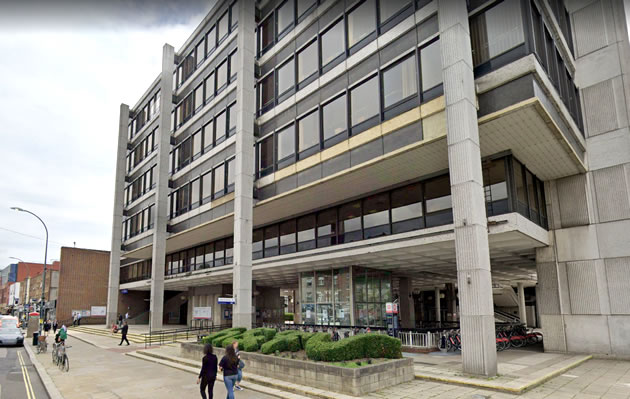Hammersmith & Fulham Lends Half a Billion To Other Councils
Short term borrowing by local authorities has rocketed over last few years

Hammersmith Town Hall. Picture: Google Streetview
Hammersmith and Fulham Council has been on a lending spree, signing half a billion pounds of loans to other councils around the UK.
Between January 2018 and July 1 2019, Hammersmith and Fulham (H&F) signed 20 loans to different councils, worth a total of £174.5 million.
The figures were revealed by The Bureau of Investigative Journalism, whose Freedom of Information requests show that H&F’s biggest customers were Southwark Council and Blackpool Council. Some councils are making use of short term loans from other authorities to fund short term investments or cover cash flow shortfalls. Up until now lending to other local authorities has been regarded as low risk because it is expected that central Government would step in if a council was unable to pay.
Government figures show that H&F then lent a total of £324 million to UK councils during the second half of 2019. The government data does not show which councils H&F lent to, but it puts the total amount that it lent to councils at £498.5 million between 2018 and January 1, 2020.
All of H&F’s loans used money from its own cash and had interest rates of between 0.8 and 1.35 per cent. The majority of them had a maturity date – when H&F wants all its money back – of about one year from when each loan was issued.
The figures highlight a growing trend across the country, of public bodies looking for unusual ways to fund services, while still trying to invest in new projects and developments. The amount of outstanding debt that different councils owe each other has more than doubled in the last five financial years, from £4.5 billion to £11.9 billion.
This year also marks a decade of austerity, in which many local councils have had to make huge savings. UK councils have lost on average about 20 per cent of their annual funding from central government since 2010.
From January to the end of June, 2019, H&F had lent:
Blackpool Council – two loans of £10 million and £15 million
Cheshire West and Chester – £7 million
Falkirk (Scotland) – £5 million
Fife (Scotland) – Two loans of £5 million
Merthyr Tydfil (Wales) – £10 million
North Tyneside – £5 million
Rotherham – two loans of £10 million and £5 million
Southwark – £10 million
Stockport – two loans of £10 million
Swale (Kent) – £5 million
In 2018 H&F lent to:
Canterbury – £10 million
Croydon – £10 million
Dudley – £15 million
Enfield – £10 million
Southwark – £15 million
Sutton – £7.5 million
A breakdown of the loans made since July 2019 was not yet available.
The local council did not feature on the list of lenders to Thurrock Council which is believed to have made the greatest use of short term loans to fund their investment activities.
Asked why H&F Council had signed these loans, a spokesperson said: “We’ve worked hard to effectively manage our finances.
“This includes short-term, low-risk lending which generates funds to re-invest in frontline services. Our financial efficiency has allowed us to keep council tax low while improving services for residents.”
H&F was also one of the top 20 councils in terms of the number of loans they agreed with other councils. The biggest lenders were Westminster, Wandsworth and Newham councils.
However, H&F took out only one loan from another local council over the two-year period, worth just £6,000, in late 2019.
What did the councils spend the money?
A spokesperson for Blackpool Council said: “The council used these loans to fund cash flow shortfalls between expenditure occurring and grant income being received from central government.”
Southwark councillor Victoria Mills, cabinet member for finance, performance and Brexit, said: “Short-term local authority to local authority lending is common practice to ensure that borrowing decisions offer best value. We make prudent strategic decisions in relation to borrowing for our public funds as they support our vital front line services, in housing, social care and education for example. This does include long term external borrowing but this is often supplemented by more flexible short-term borrowing from other local authorities. We use the money we borrow from Hammersmith and Fulham as part of our strategy to minimise the overall debt interest expense for the council.”
Rotherham Council’s Assistant Director of Financial Services, Graham Saxton, said: “It’s normal practice for Councils to borrow from and lend to each other to suit their individual cashflow positions.
“The loans are not taken out for specific purposes or spend and are part of the Council’s annual borrowing strategy which is approved by Full Council, however decisions on which loans are taken out are made by senior officers under delegated authority. Full information about the planned spend for the Council, including what borrowed funds are used for, is available in our annual budget report.”
A Stockport Council spokesperson said: “These were temporary loans – taken as a usual step by the Council’s treasury management team to manage fluctuations in the Council’s cashflow.”
Owen Sheppard - Local Democracy Reporter